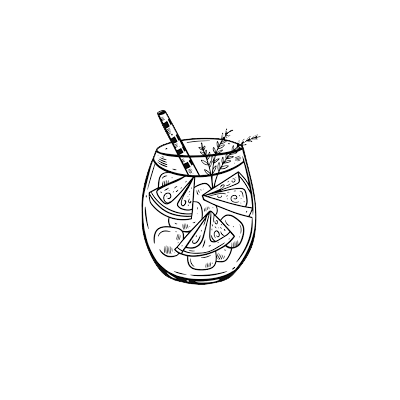Bringing green indoors is revitalizing, and the choice of planters is a very significant factor in the process. For both professionals and beginners in planting, it’s crucial to choose the right planter to enhance the beauty of the plants and the house. In this guide, you will learn how to select the appropriate planters, the strategies and tricks for selecting the best planters, and other important factors to consider to make indoor and outdoor plants healthy.

Understanding Your Plant's Needs
It is important to know what your plant requires before we go down the aesthetics and styles of planters. Each plant species has its peculiarities concerning the amount of space it needs, drainage, and materials.
Size Matters
Size is probably one of the most important considerations when it comes to deciding on the best planters. A planter that is too small hinders the growth of roots and can trap your plant with too many roots. On the other hand, a large planter tends to cause overwatering and root rottenness.
- Small Plants: For succulents, cacti, and other small plants, select planters that are only a little bigger than the plant's root ball.
- Medium to Large Plants: For large plants, make sure the planter gives enough room for the roots to grow and has a stable base. Generally, the planter should be slightly larger in diameter than the plant's root ball by 1-2 inches.
Drainage is Key
Good drainage is important because water cannot stay at the bottom of the planter, which will cause root rot. When selecting appropriate planters, it is always best to select those with drainage holes.
- Indoor Planters: To avoid staining and damaging your furniture and floors, place them on saucers or trays to collect the water.
- Outdoor Planters: Make sure that the planters are well-drained for rainfall to drain well and avoid water logging.
Material Matters
The material with which the planter is made influences its look and usability. Here’s how to choose the perfect planters based on materials:
- Terracotta pots: These pots are ideal for plants that do not require a lot of water. The clay is porous, allowing for quick water shedding. However, they are heavy and are known to crack in cold conditions or when they come into contact with water.
- Plastic: Functional and portable, plastic planters are good at retaining moisture, making them suitable for watering plants that require more frequent watering. They also do not easily get damaged like their counterparts.
- Ceramic: These are attractive and are available in different sizes, styles, and colors. Ensure they have drain holes so water does not accumulate in the pots.
- Metal: Contemporary and sleek metal planters are long-lasting but become hot surfaces when exposed to direct sun, which is not ideal for certain plants.
- Wood: Natural and rustic wooden planters are good for plants because they insulate the plant roots. However, they can deteriorate with time if some special processes are not applied to them.
Some of the things that one should consider when choosing the indoor planters are;
Before selecting the indoor planters, they should be considered in relation to the overall interior design and the requirements of the indoor plants.
Match Your Decor
Interior planters are a perfect addition to any interior design. Here’s how to choose the perfect planters to match your decor:
- Modern Spaces: Choose elegant and simple designs in white, grey, or other unobtrusive colors or metallic hues.
- Bohemian or Eclectic Spaces: Select bright-colored planters, those with a pattern, or those made from natural materials such as baskets.
- Traditional or Classic Spaces: If you are using actual pots, then opt for the simplest design and the more traditional ceramic or terracotta pots in plain colors.
Consider Plant Needs
- Low-Light Plants: For low-light plants such as snake plants, pothos, etc., select planters appropriate for the house's low-light areas.
- Humidity-Loving Plants: When choosing planters for humidity-loving plants such as ferns or orchids, ceramic or plastic planters are advisable as they hold water well.
Mobility and Flexibility
In the case of indoor plants, it is necessary to consider how to transfer them to another position for better light or for ease of watering. This can be made easier by using lightweight materials such as plastic or planters with wheels incorporated into them.
Some guidelines that can help in choosing the right type of outdoor planters are:
External planters must endure various conditions and accommodate flowers, shrubs and other types of plants.
Durability
Outdoor planters should be of a very strong kind that can withstand any kind of weather. Here’s how to choose the perfect planters outdoors:
- Weather-Resistant Materials: Select planters constructed from fiberglass, metal or treated timber, which will not succumb to the ravages of rain, wind or strong sunlight.
- Frost-resistant: Choose the options that will not crack in the cold climate conditions of the geographical region where the structure is to be built.
- Size and Scale
- Large Plants and Trees: Heavy and large planters are appropriate for large plants or trees to avoid tipping over.
- Group Plantings: When planting several plants at once, it is advisable to use bigger pots or planter boxes to make a bolder statement.
Aesthetic and Functionality
Hanging planters can be very useful in the garden and beautifying it.
- Hanging Planters: Suitable for limited space or to give plants a chance to grow in the vertical plane.
- Raised Planters are useful for growing vegetables or giving your yard an elevation and variety boost.
- Planter Boxes: Suitable for flowers, herbs or small shrubs and very flexible in their use.
Tips to keep the plants healthy
After selecting the right planters, it is time to consider how to ensure the plants’ health.
Proper Watering
- Check Soil Moisture: Always check for moisture levels by using a moisture meter or just by testing the soil with your finger.
- Watering Schedule: Set a watering routine based on the plant, the climate, and the season and try to stick to it.
Soil and Fertilization
Employ a good quality potting mix appropriate for the type of plant to be grown. Water your plants with the required fertilizer to feed on them and get the required nourishment to grow and remain healthy.
Placement and Light
- Right Spot: Place your plants in the right spot for the light they need, whether it is direct light, indirect light or low light.
- Rotate Plants: It is advisable to occasionally change the positions of your plants to allow even growth and light exposure.

Closing Note
Selecting the right planters requires factors such as the plant's growth requirements, the right material and the right home decoration or outdoor look. Whether you are choosing the perfect planters indoors or outdoors, these tips and tricks will help you make the right decisions. Remember, the right planter beautifies the plants and, at the same time, provides them with a conducive environment in their new home. Checkout aesthetic planters at Smokey Cocktail to elevate your living space.
Following these guidelines will help you care for your plants better and improve the aesthetics of your living space. Happy planting!














